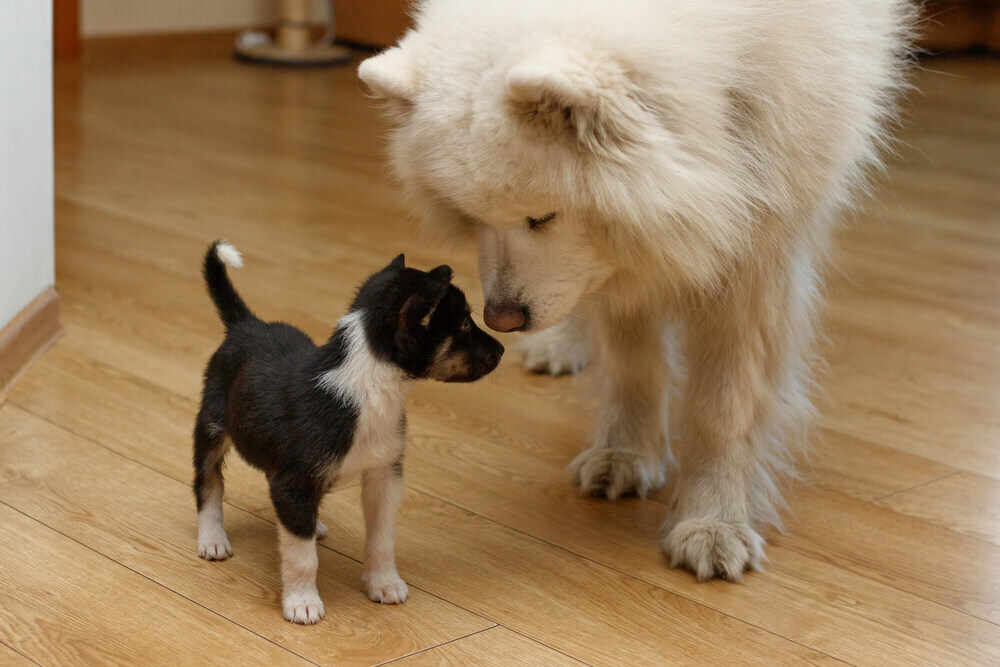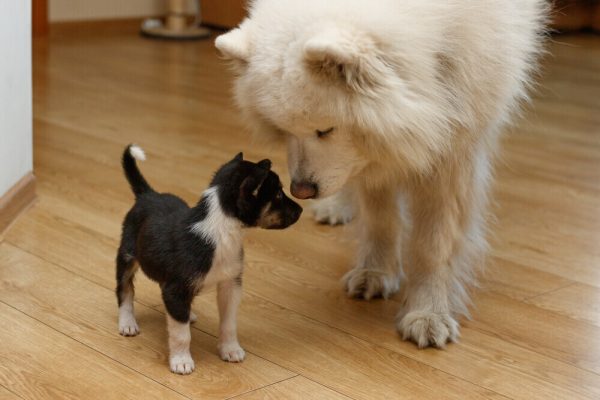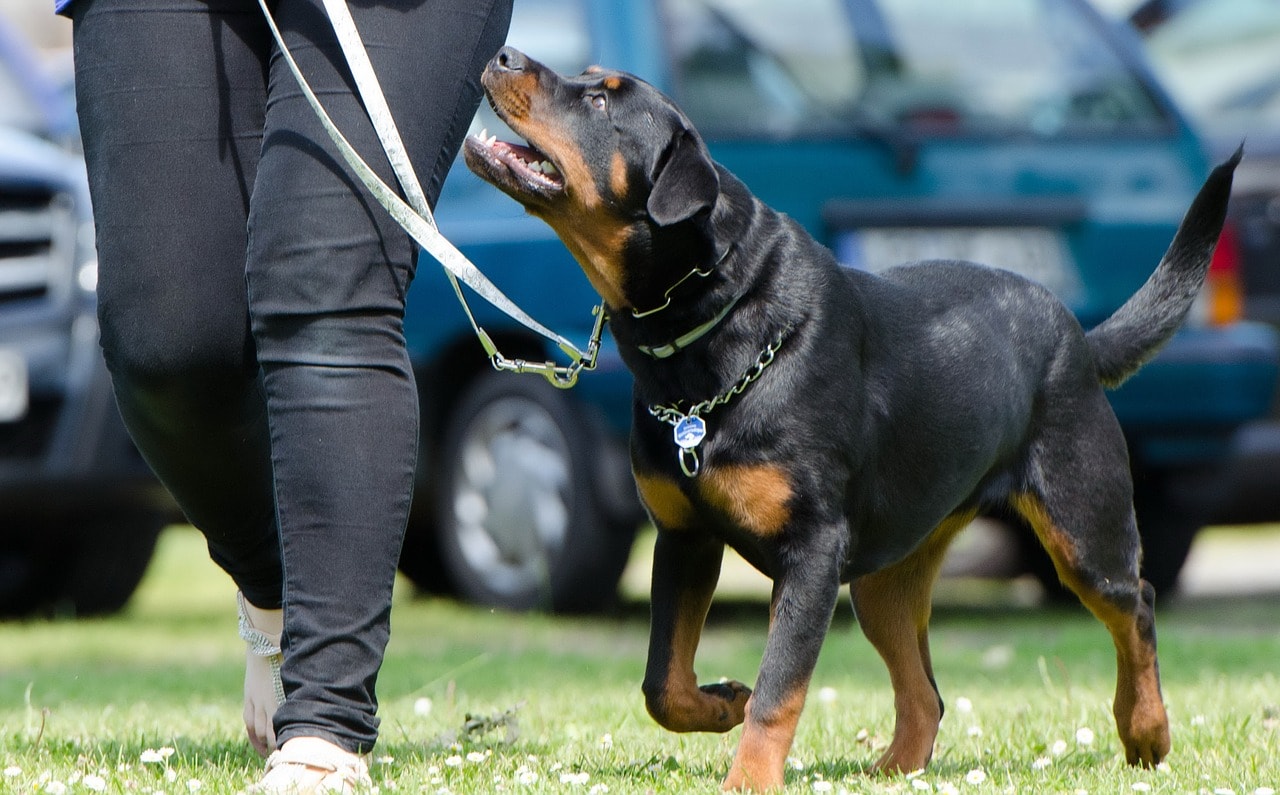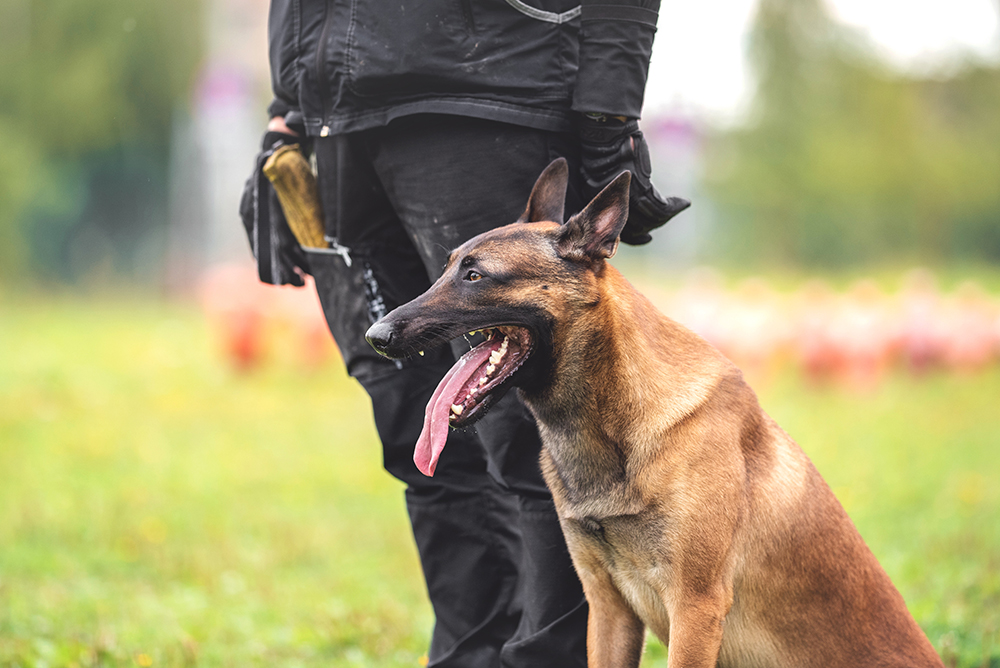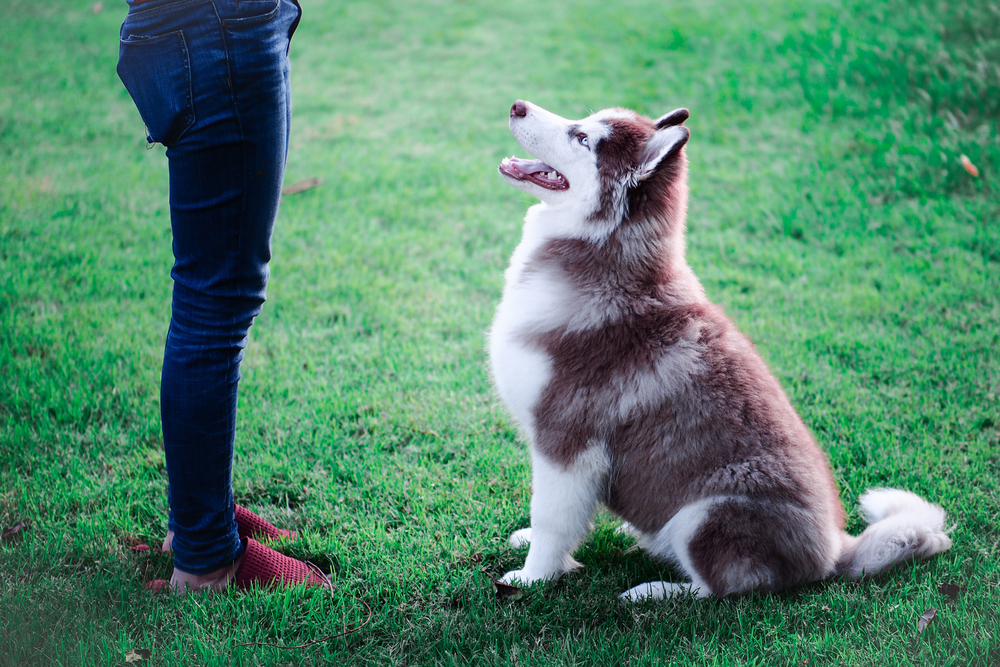Some dogs can meet all other canines, tails wagging and sniffers going 100 miles an hour. Others will react in a more standoffish or aggressive manner, barking, snarling, snapping, and displaying other bad signs.
When two dogs are introduced to each other, whether out at the dog park or if you’re bringing another dog into your home, the way that it happens can say a lot about how the relationship will go. In this article, we’re going to explore some dos and don’ts when dogs meet each other for the first time.

The 9 Steps to Introduce the Dogs
1. Go to Neutral Territory
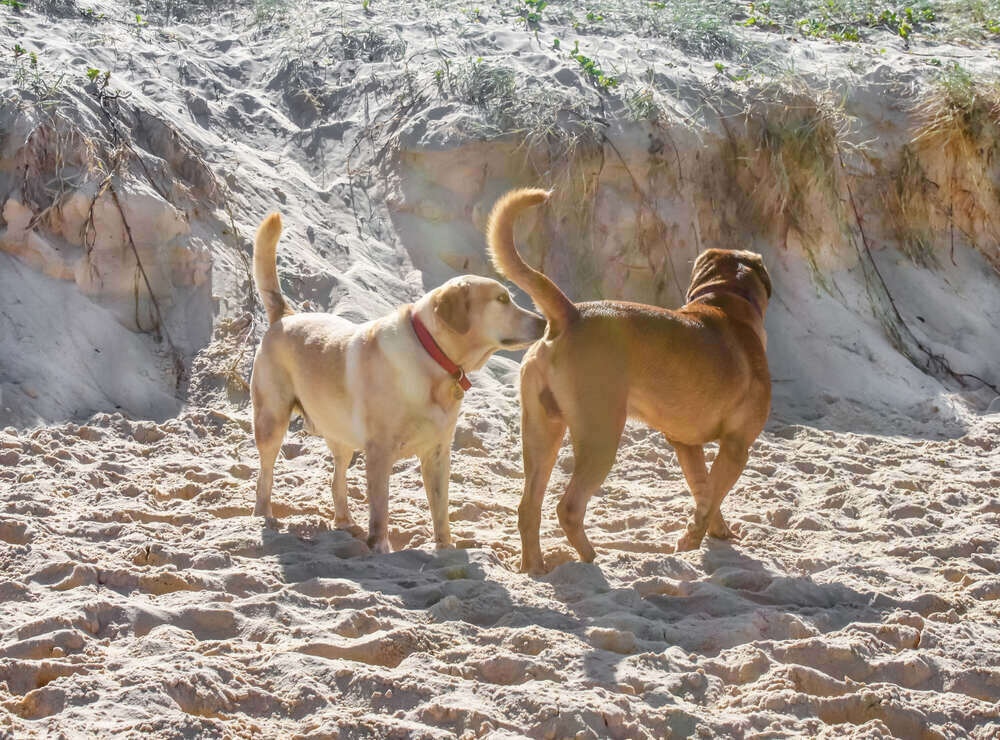
Dogs can be very possessive about their surroundings. So it may be best to go somewhere where both dogs will feel comfortable in the space. If one dog is at a shelter, the facility likely has a meeting space available so the two can warm up. If you’re at a dog park, go somewhere with no other dogs around. If you’re introducing a new dog at your home to your current dog, go somewhere that the current dog hasn’t already claimed as their own, but it’s often better to meet the new dog away from your home in the first place.
2. Keep Both Dogs Leashed
It is crucial to keep both dogs on a leash to control the situation and have another person that can help you. Harnesses are very convenient, especially those that have the control handle in the back. This way, if something gets out of hand, both people are able to control the dogs and separate them accordingly.
3. Do Not Put Pressure on the Situation
It’s tempting to want to push the two to socialize, but you should really keep interferences to a minimum. They are going to be extremely fixated on the other dog and on high alert. Your measures to make things more peaceful might actually make things worse. Try not to force the relationship, but don’t intervene unless absolutely necessary.
4. Prepare for the Unexpected
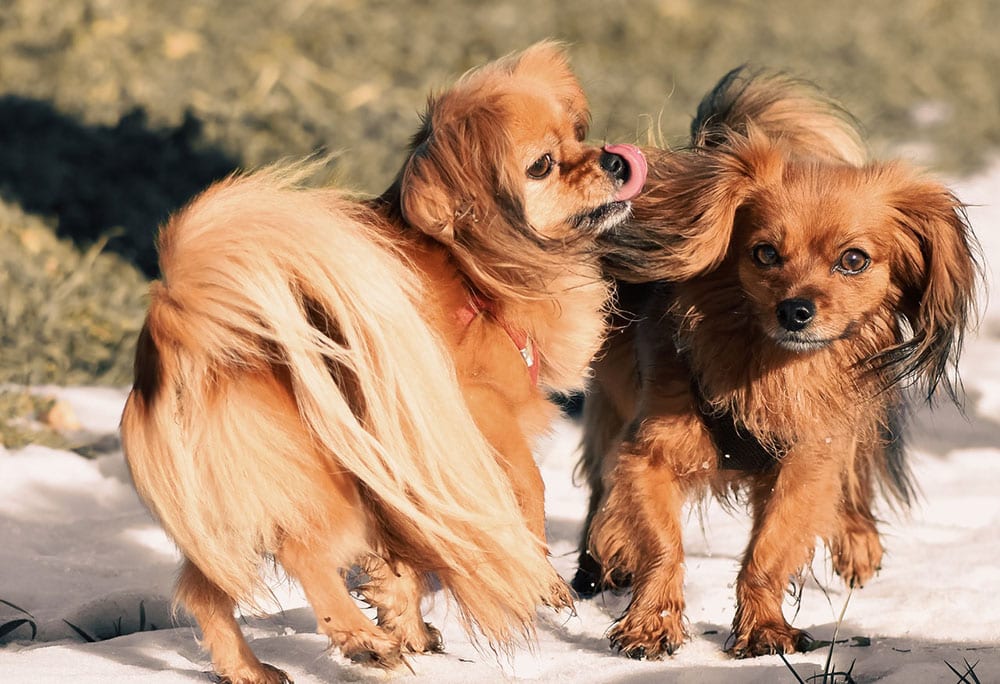
Anything can happen. Things go wrong all the time. A couple of sniffs and someone is upset! So, don’t trust the situation right away, even if it seems like things are going well.
5. Pay Attention to Body Language
Keep an eye on the vibes. Check out every single detail about their body language. Are they acting hesitant? Does one have their hair standing up, and the other have their tail wagging? These visual cues are crucial to understanding where each dog is mentally.
If you are concerned about your dogs behavior, we suggest speaking to a vet.

If you need to speak with a vet but can’t get to one, head over to PangoVet. It’s an online service where you can talk to a vet online and get the personalized advice you need for your pet — all at an affordable price!
6. Be Aware of Personalities
Keep in mind that two dogs will likely have two different personalities. Because of that, it is especially important to keep a close eye on things and watch for changes.
If you have one dog that has never really been around other dogs before, they might have a very stressful or hard time and can even act out of character. If you have another dog that’s very used to other dogs, they may be overbearing to the more anxious one.
7. Don’t Involve Toys or Food
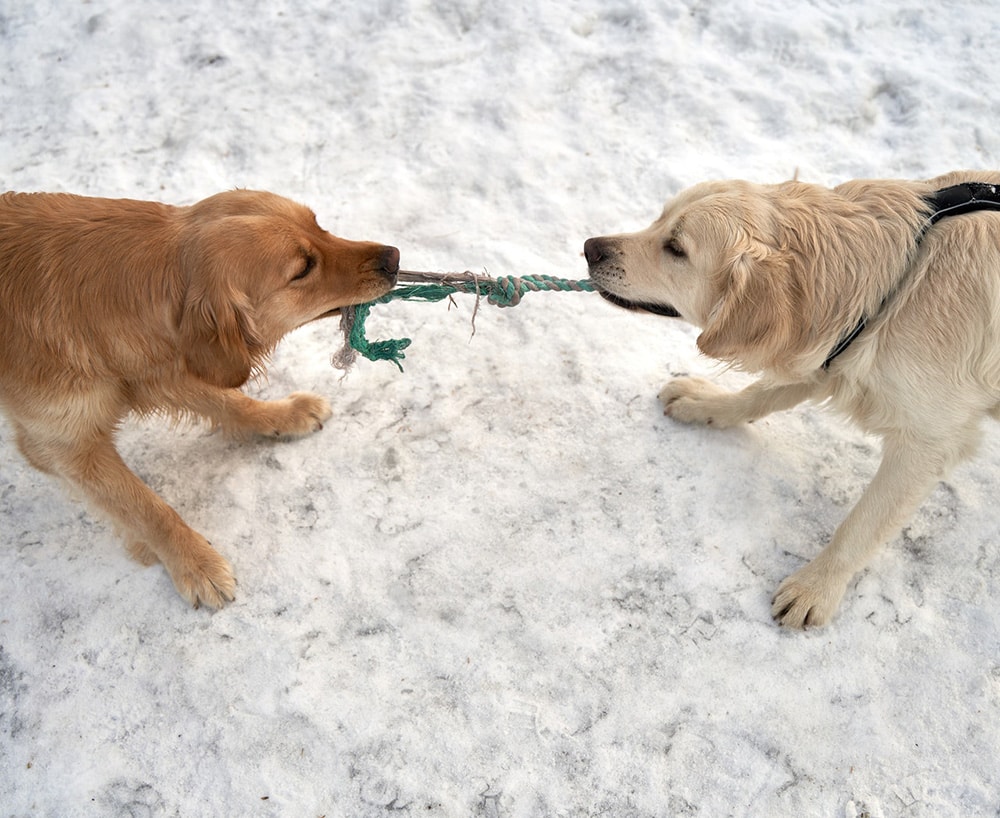
It might seem like a good idea to involve toys or food, but this can cause more complications than not. Some dogs can have food or resource aggression, causing them to want to protect their stuff rather than playing nice.
8. Take a Walk
A walk can provide both dogs with adequate distraction. They’re going to be very worried about the busy world happening around them and won’t be as hyper-focused on the unfamiliar canine. This can also serve as a small bonding experience, allowing both of them to do the same activity without any pressure.
9. Allow Supervised Play
If things seem to be going well, you can allow supervised play. This will let both dogs burn off some steam and get to know each other a lot better. Be ready to intervene if something should go wrong.
How Soon Do Dogs Get to Know One Another?
Anytime two dogs meet, keep in mind that this is just an introduction. It takes a very long time for dogs to fully warm up and be themselves around another canine. On average, it generally takes about a month before the two become fully comfortable with each other. Along the way, you might have some hiccups, challenges, or obstacles to overcome , but it is certainly worth it in the end.
Typically, dogs will warm up to each other and just be very grateful they have another canine to play with. But differences in personality can make it complicated for the two to get along. They might tolerate each other but not necessarily be friends. As long as you can navigate these drastic personality differences in the household, it shouldn’t be a problem. But any aggression should be met right away with concern and the two should always be supervised.
So if you do take your dog to a meet and greet at a shelter, and there is any altercation, you might want to repeat the visit a second time or even a third time to see if anything changes.
Some shelters might even be willing to come to alternate locations, so don’t be afraid to talk about options, but veer away from making a decision that could negatively impact the situation.
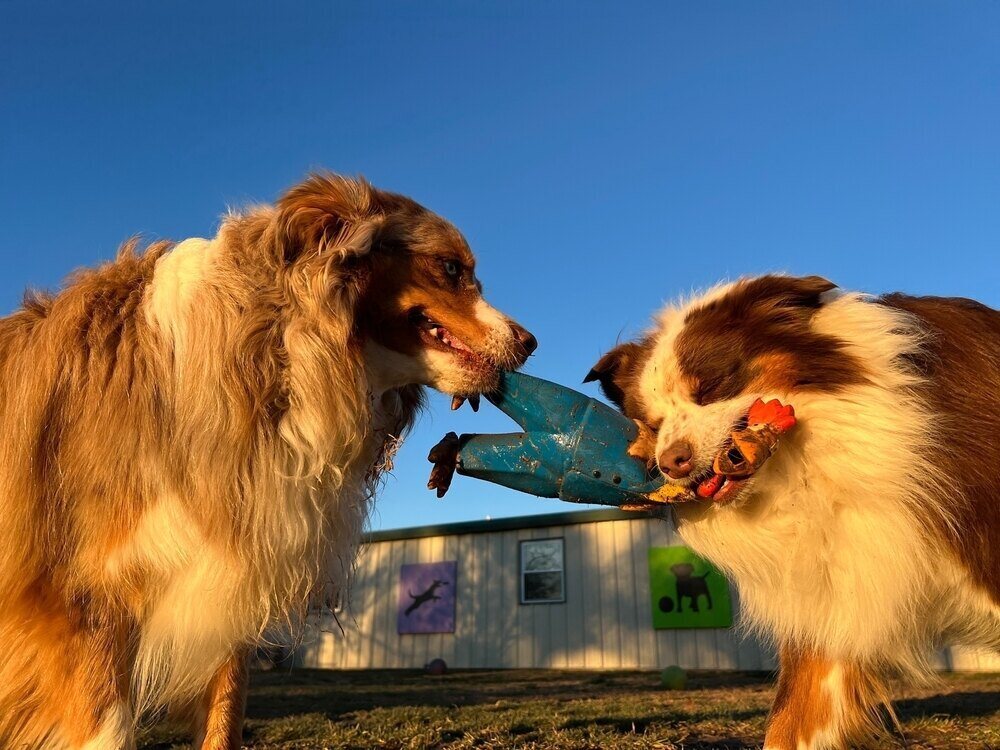

Conclusion
Now that you know a little more about dog meetings, you can apply it to your special situation. It can be a scary time for both you and your pet if you are unsure how the other will react. Hopefully, it winds up being an unbreakable friendship.
If your dog has ever shown aggression, take extra precautions when introducing them to a new dog and consider enlisting the help of a veterinarian or trainer to make the meeting more smooth.
See also:
- How To Introduce A Puppy To A Dog: 7 Helpful Tips
- Do Goats and Dogs Get Along? Vet Approved Facts & FAQ
Featured Image Credit: Yuliia Gornostaieva, Shutterstock
Contents
- The 9 Steps to Introduce the Dogs
- 1. Go to Neutral Territory
- 2. Keep Both Dogs Leashed
- 3. Do Not Put Pressure on the Situation
- 4. Prepare for the Unexpected
- 5. Pay Attention to Body Language
- 6. Be Aware of Personalities
- 7. Don’t Involve Toys or Food
- 8. Take a Walk
- 9. Allow Supervised Play
- How Soon Do Dogs Get to Know One Another?
- Conclusion

